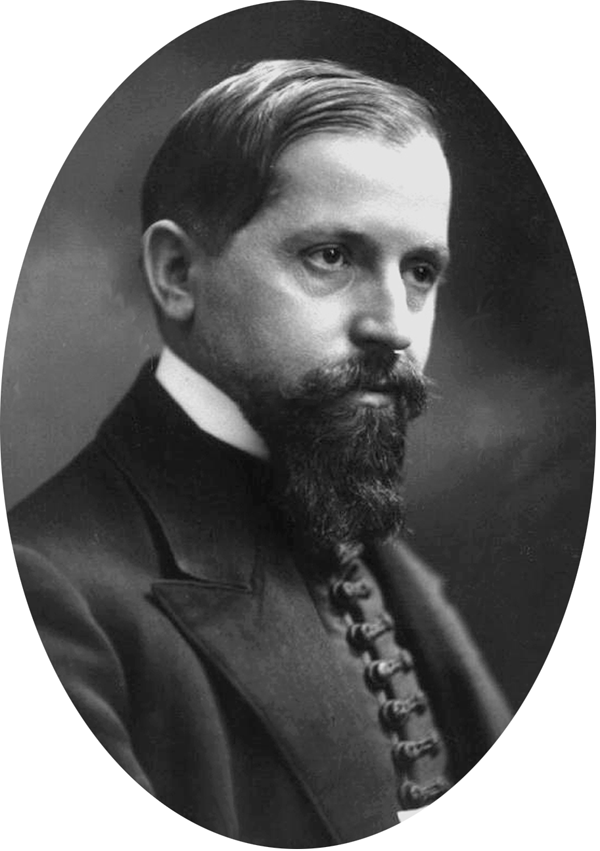Iosif Trifa on:
[Wikipedia]
[Google]
[Amazon]
 Iosif Trifa (3 March 1888 – 12 February 1938) was a
Iosif Trifa (3 March 1888 – 12 February 1938) was a
 Iosif Trifa (3 March 1888 – 12 February 1938) was a
Iosif Trifa (3 March 1888 – 12 February 1938) was a Romanian Orthodox
The Romanian Orthodox Church (ROC; ro, Biserica Ortodoxă Română, ), or Patriarchate of Romania, is an autocephalous Eastern Orthodox church in full communion with other Eastern Orthodox Christian churches, and one of the nine patriarchates ...
priest and evangelist. He founded "Oastea Domnului
The Army of the Lord ( ro, Oastea Domnului), also known as The Lord's Army, is an evangelical " renewal movement within the Romanian Orthodox Church". The founder of the Army of the Lord, Father Iosif Trifa, as well as consequent leaders, Ioan Ma ...
" ("The Lord's Army"). He was also the uncle of Valerian Trifa
Valerian Trifa (; secular name Viorel Donise Trifa ; June 28, 1914 – January 28, 1987) was a Romanian Orthodox cleric and fascist political activist, who served as archbishop of the Romanian Orthodox Church in America and Canada. For part of hi ...
. Trifa placed on the 100 greatest Romanians list.
Life
Iosif Trifa was born in the family of Dimitrie and Ana Trifa, from the village Certege, Torda-Aranyos County (nowCâmpeni
Câmpeni (German: ''Topesdorf''; Hungarian: ''Topánfalva'') is a town in Alba County, Transylvania, Romania. The town administers 21 villages: Boncești, Borlești, Botești (''Botesbánya''), Certege (''Csertés''), Coasta Vâscului, Dăndu� ...
, Alba County, Romania
Romania ( ; ro, România ) is a country located at the crossroads of Central, Eastern, and Southeastern Europe. It borders Bulgaria to the south, Ukraine to the north, Hungary to the west, Serbia to the southwest, Moldova to the east, and ...
). He was the 4th son of a total of 6. He was baptised on 6 March 1888.
When he was 7 years old, in 1895, he started elementary school in his village, and in 1900 started gymnasium in Beiuș
Beiuș (; hu, Belényes) is a city in Bihor County, Romania near the Apuseni Mountains. The river Crișul Negru flows through Beiuș, and the city administers a single village, Delani (''Gyalány'').
Between the late 18th and very early 20th ...
. Later on, he studied theology in Sibiu
Sibiu ( , , german: link=no, Hermannstadt , la, Cibinium, Transylvanian Saxon: ''Härmeschtat'', hu, Nagyszeben ) is a city in Romania, in the historical region of Transylvania. Located some north-west of Bucharest, the city straddles the Ci ...
. In 1910 he was named a confessional teacher in the town of Vidra de Sus, which is now the town of Avram Iancu, Alba
Avram Iancu ( hu, Felsővidra, german: Ober-Wider) is a commune located in Alba County, Transylvania, Romania. It is composed of thirty-three villages: Achimețești, Avram Iancu, Avrămești, Bădăi, Boldești, Călugărești, Cârăști, Cârț ...
, named after the Transylvania
Transylvania ( ro, Ardeal or ; hu, Erdély; german: Siebenbürgen) is a historical and cultural region in Central Europe, encompassing central Romania. To the east and south its natural border is the Carpathian Mountains, and to the west the Ap ...
n Romanian national hero.
In 1911 he married Iuliana Iancu, niece to the hero Avram Iancu. In the same year he was made priest in Vidra. In 1912 his first child, a girl, Olimpia, was born, but she died the following year. In 1914 his second child, a boy this time, Titus Gheorghe, was born, but he also died the following year. In 1916 Romania
Romania ( ; ro, România ) is a country located at the crossroads of Central, Eastern, and Southeastern Europe. It borders Bulgaria to the south, Ukraine to the north, Hungary to the west, Serbia to the southwest, Moldova to the east, and ...
entered World War I
World War I (28 July 1914 11 November 1918), often abbreviated as WWI, was one of the deadliest global conflicts in history. Belligerents included much of Europe, the Russian Empire, the United States, and the Ottoman Empire, with fightin ...
on the side of the Allies, in an effort to wrangle Transylvania from Austro-Hungarian rule. In 1916, Trifa's third child was born: a boy, whom he named the same as his second, Titus-Gheorghe; this child is the only one who survived. In 1918, his fourth child, a girl, Augustina, was born. World War I ended, but the Spanish flu
The 1918–1920 influenza pandemic, commonly known by the misnomer Spanish flu or as the Great Influenza epidemic, was an exceptionally deadly global influenza pandemic caused by the H1N1 influenza A virus. The earliest documented case wa ...
endemic killed both his wife Iuliana, and his daughter Augustina. He was left only with his son, Tit, who at the time was three years old.
He was excommunicated
Excommunication is an institutional act of religious censure used to end or at least regulate the communion of a member of a congregation with other members of the religious institution who are in normal communion with each other. The purpose ...
by the Romanian Orthodox Church in 1936. This decision would be lifted on 28 September 1990.
He died in 1938 in Sibiu
Sibiu ( , , german: link=no, Hermannstadt , la, Cibinium, Transylvanian Saxon: ''Härmeschtat'', hu, Nagyszeben ) is a city in Romania, in the historical region of Transylvania. Located some north-west of Bucharest, the city straddles the Ci ...
after heart surgery, and was buried in the city's cemetery.
References